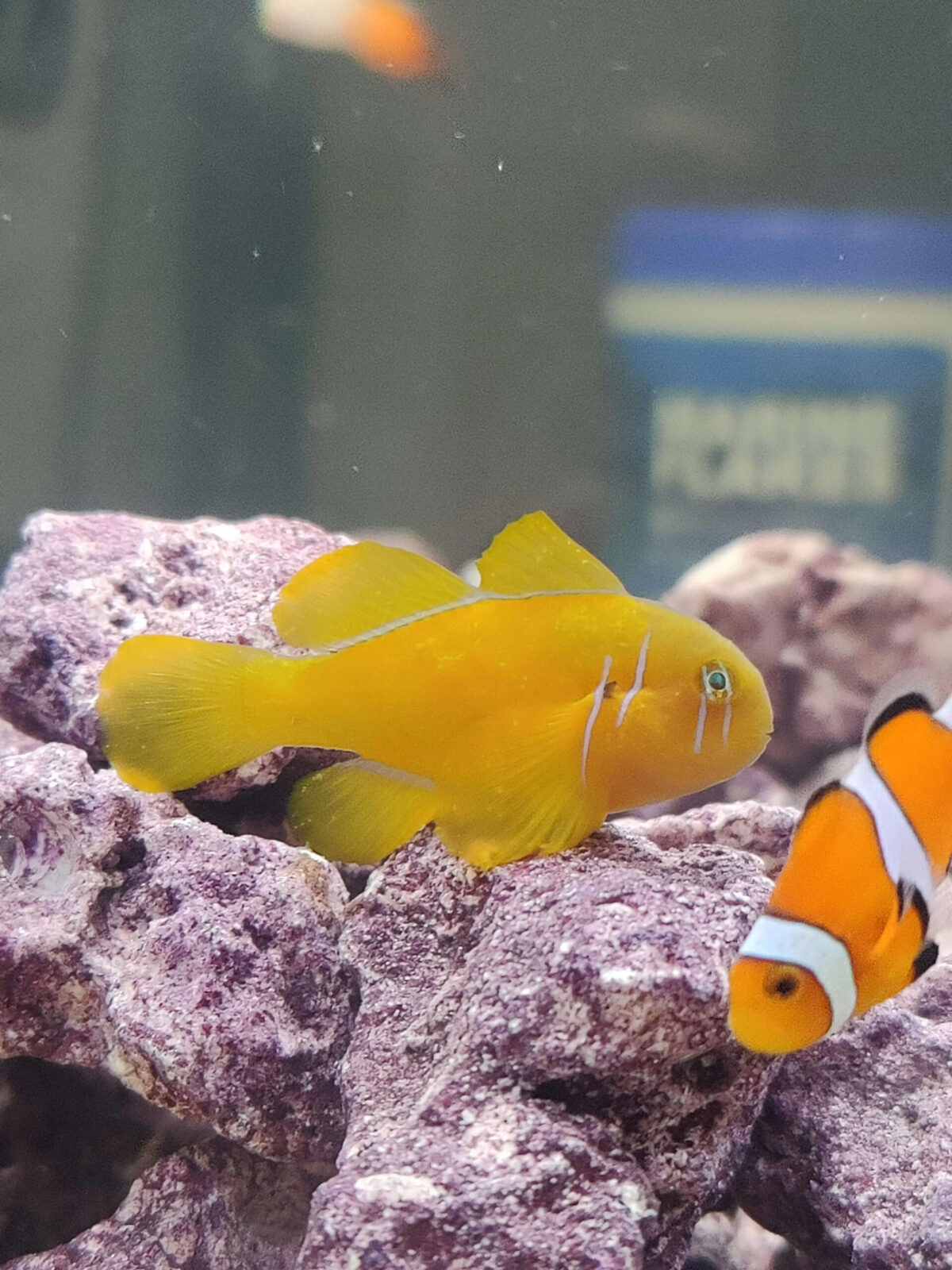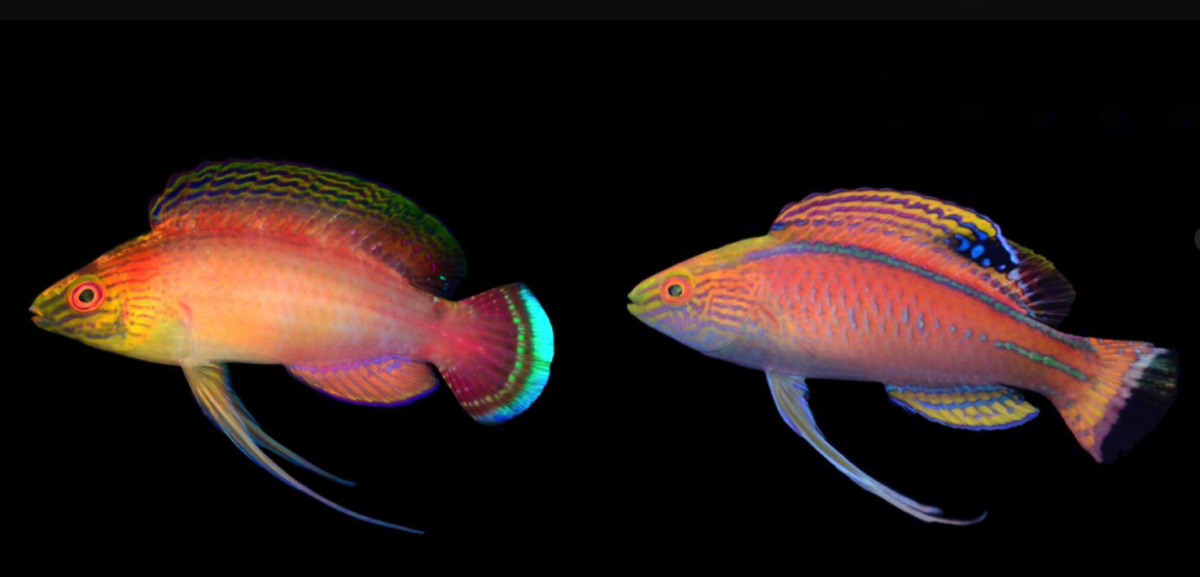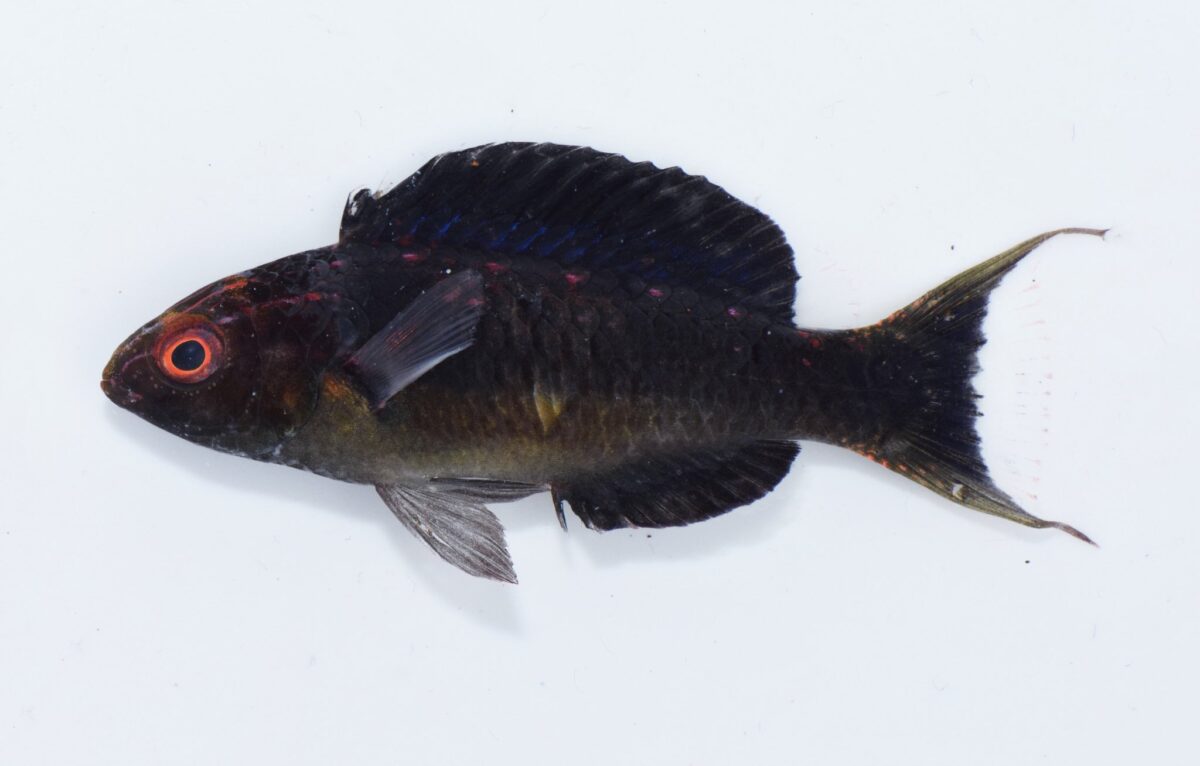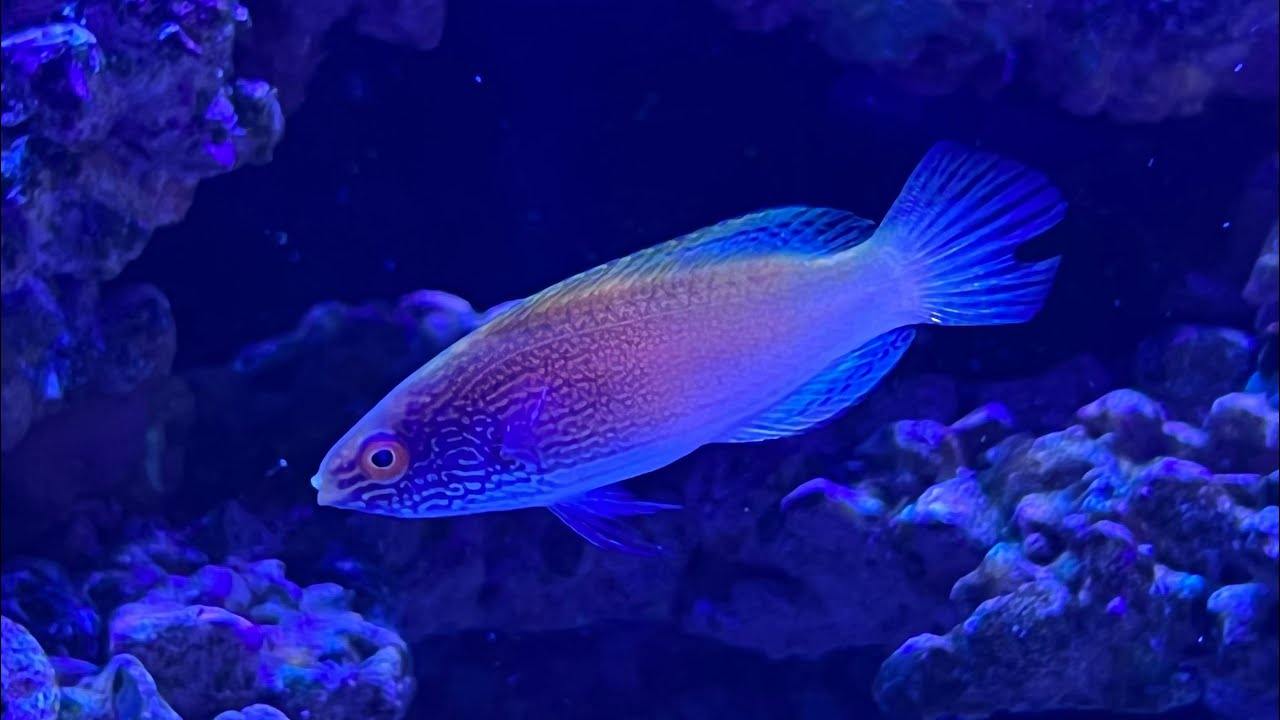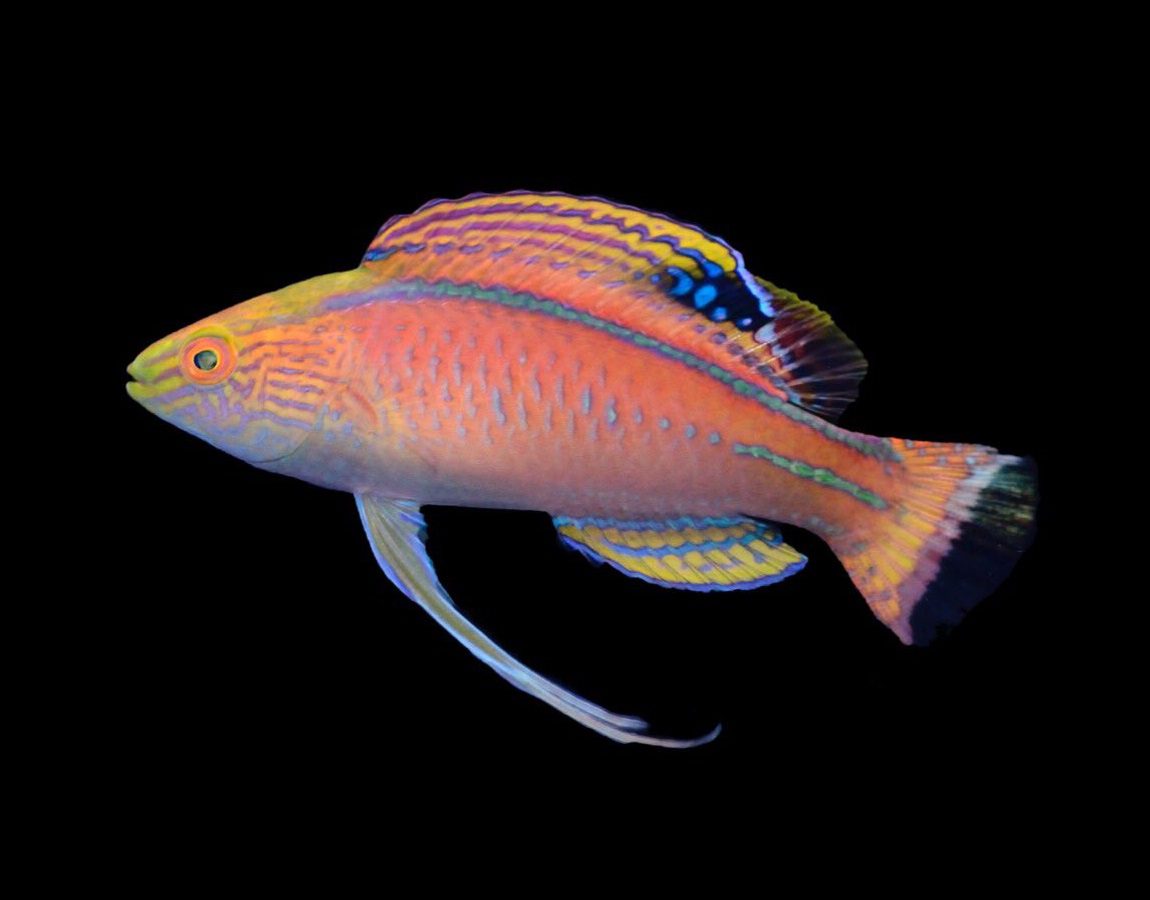Greetings, fellow marine aquarium enthusiasts! Today, we are excited to bring you a comprehensive species guide on the mesmerizing Clown Goby (Gobiodon okinawae). This vibrant and playful saltwater fish is popular among hobbyists due to its stunning colours and lively temperament. Whether you are a seasoned aquarist or just starting your saltwater tank journey, this guide will provide all the information you need to care for your Clown Goby and ensure its well-being.
When it comes to marine aquarium fish, the Clown Goby is a true gem. Its scientific name, Gobiodon okinawae, reflects its unique characteristics and origin. This guide will explore its taxonomy, natural habitat, and distribution, shedding light on its fascinating traits and where you can find them in the wild.
Furthermore, we will dive deep into the physical description of this enchanting species. From its vibrant hues and intricate markings to any gender differences and recognized varieties/grades, we will cover it all. Additionally, you will gain valuable insights into the behaviour and temperament of the Clown Goby, unveiling how it interacts with other species in your tank.
Creating a suitable environment for your Clown Goby is crucial for its well-being. In the section on aquarium requirements, we will reveal the ideal tank size and layout, precise water parameters, and compatible tank mates. We will also explore the compatibility of the Clown Goby with live plants and invertebrates, enabling you to create a vibrant and harmonious aquatic ecosystem.
Care is essential to ensure your Clown Goby thrives in its new home. We will provide a comprehensive care guide covering critical topics such as feeding, tank maintenance, and disease prevention and treatment. Armed with this knowledge, you will be equipped to provide the best care for your underwater companion.
The diet and feeding habits of the Clown Goby are also of utmost importance. This section will discuss their dietary preferences, recommend suitable foods, and a feeding schedule. We will also offer valuable tips to ensure a balanced and nutritious diet for your Clown Goby, promoting overall health and vitality.
We also have you covered for those interested in breeding the Clown Goby. This guide will provide insights into sexing the fish, breeding behaviour, necessary conditions for successful reproduction, and caring for eggs and fry. We will also discuss any challenges you may encounter when breeding Clown Gobies in captivity.
To wrap things up, our summary will serve as a quick refresher on the critical points covered throughout this guide. We will highlight the essential care requirements to keep your Clown Goby happy and thriving.
Key Takeaways:
- Clown Gobies (Gobiodon okinawae) are stunning saltwater fish known for their vibrant colours and playful temperament.
- Understanding the taxonomy, natural habitat, and distribution of Clown Gobies will deepen your appreciation for these captivating creatures.
- Clown Gobies exhibit unique physical characteristics, including various colours, intricate markings, and subtle gender differences.
- Creating an ideal tank environment, ensuring suitable tank mates, and providing proper care are crucial for the health and well-being of your Clown Goby.
- Feeding your Clown Goby a balanced and nutritious diet is essential to support its overall health and vitality.
Introduction
Welcome to the second section of our Clown Goby care guide! In this section, we will dive into the taxonomy and classification of the Clown Goby, providing insights into its scientific name, family, natural habitat, and distribution.
Taxonomy and Classification
The Clown Goby, known scientifically as Gobiodon okinawae, belongs to the Gobiidae family, one of the most prominent fish families. As part of the Gobiidae family, the Clown Goby shares characteristics with other gobies, such as their small size, elongated body shape, and fused pelvic fins that form a suction cup-like structure. These features enable them to perch and cling to various surfaces, including live corals and rocks.
| Attribute | Description |
|---|---|
| Scientific Name: | Gobiodon okinawae |
| Common Names: | Clown Goby, Okinawa Goby |
| Origin: | Western Pacific Ocean |
| Family: | Gobiidae |
| Social: | Peaceful |
| Domain in Tank: | Prefers living in and around corals and rocks |
| Minimum Tank Size: | 10 gallons (38 liters) |
| Diet: | Carnivore; requires a varied diet of meaty foods and occasionally algae |
| Breeding: | Can be bred in captivity; egg-laying |
| Care Level: | Easy |
| pH Range: | 8.1-8.4 |
| Water Hardness: | 8-12 dKH |
| Temperature: | 72-78°F (22-26°C) |
| Common Diseases: | Marine Ich, although relatively disease resistant |
| Life Span: | 2-4 years |
| Size: | Up to 1.5 inches (3.8 cm) |
| Best Tank Mates: | Other peaceful fish, snails, shrimp, and non-aggressive corals |
Natural Habitat and Distribution
The natural habitat of the Clown Goby is primarily found in the Indo-Pacific region, specifically in areas such as the Great Barrier Reef, Indonesia, the Red Sea, and the Maldives. These fish are typically found in shallow reef environments, often inhabiting crevices and small coral heads.
Clown Gobies have a symbiotic relationship with certain coral species, particularly in the genus Pocillopora. They form intricate mutualistic bonds with these corals, often dwelling in their living branches for protection while providing the corals with cleaning services.
Due to their small size and specific habitat preferences, Clown Gobies can be relatively localized in distribution. Their range may be limited to particular coral reef systems or regions within the Indo-Pacific. However, they have also been observed in the aquarium trade and are commonly kept by marine enthusiasts worldwide.
Physical Description and Characteristics
This section will delve into the physical description and characteristics of the Clown Goby, Gobiodon okinawae. This small saltwater fish is known for its vibrant and eye-catching colours, making it a popular choice for marine aquarium enthusiasts.
Colours and Markings
The Clown Goby displays a beautiful range of colours, including bright yellow, orange, and blue. Its body is adorned with intricate patterns and markings, such as vertical stripes or spots, which vary depending on the individual and the species. These striking colours and patterns make the Clown Goby a visually stunning addition to any saltwater tank.
Gender Differences
There are minimal visual differences between male and female Clown Gobies. However, males may display more intense coloration during courtship and breeding and exhibit increased territorial behavior.
Varieties
While variations in colour and pattern are expected within the Clown Goby species, no officially recognized varieties exist. However, individual specimens may display subtle differences due to genetic variation or regional populations.
Grades
Clown Gobies are not typically graded based on colour or pattern variations in the aquarium trade. However, some hobbyists may use terms like “high-grade” or “premium” to describe specimens with particularly vivid colours or unique markings.
Behaviour and Temperament
The Clown Goby is known for its peaceful and non-aggressive nature, making it an excellent choice for community tanks. It generally gets along well with other small, passive fish species. However, it’s important to note that the Clown Goby may become territorial towards conspecifics (members of the same species) or fish of a similar appearance. Providing ample hiding spots and caves is best to accommodate their natural behaviour.
Aquarium Requirements
Creating the right environment is essential for the health and well-being of your Clown Goby. This section will provide detailed information about the aquarium requirements to ensure a thriving habitat for your fish.
Ideal Tank Size and Layout
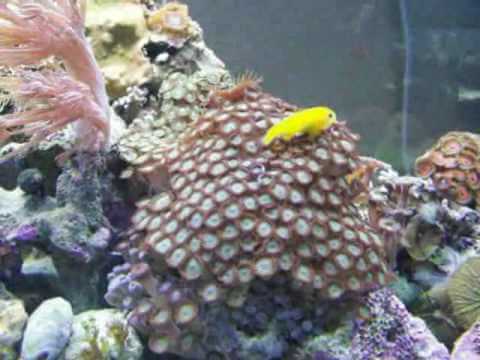
Regarding tank size, a minimum of 10 gallons (37 litres) is recommended for a single Clown Goby. However, a tank size of 20 gallons (75 litres) or more is ideal to provide ample space and comfort.
Consider providing plenty of hiding spots for tank layout using live rock, caves, and coral structures. The Clown Goby loves to explore and dart in and out of crevices, so creating a visually exciting and dynamic environment will keep them active and engaged.
Water Parameters
Maintaining stable water parameters is crucial for the health of your Clown Goby. Here are the recommended water parameters:
- Temperature: 75-82°F (24-28°C)
- Salinity: 1.022-1.025 specific gravity
- pH: 8.1-8.4
- Ammonia and Nitrite: 0ppm
- Nitrate: Less than 20ppm
Regular water testing and monitoring are essential to ensure optimal conditions for your Clown Goby. Consider using a high-quality marine aquarium test kit to measure these parameters accurately.
Suitable Tank Mates and Potential Conflicts
When choosing tank mates for your Clown Goby, selecting peaceful species that will not pose a threat or compete for resources is essential. Here are some suitable tank mates:
- Small gobies and blennies
- Dwarf angelfish
- Small wrasses
- Certain species of damselfish
Avoid housing your Clown Goby with aggressive or territorial species, as they may harass or injure the goby. It is also recommended to introduce tank mates of a similar size to minimize potential conflicts.
Compatibility with Live Plants and Invertebrates
Clown Gobies are generally compatible with live plants and invertebrates in the aquarium. However, choosing hardy and well-established plant species is essential, as the goby may occasionally nibble on softer plants.
When it comes to invertebrates, Clown Gobies are generally peaceful and can coexist with various species, such as cleaner shrimp, snails, and small hermit crabs.
Care
Proper care is essential to ensure the health and well-being of your Clown Goby. This includes providing the right environment, feeding them a balanced diet, and taking preventive measures against common diseases.
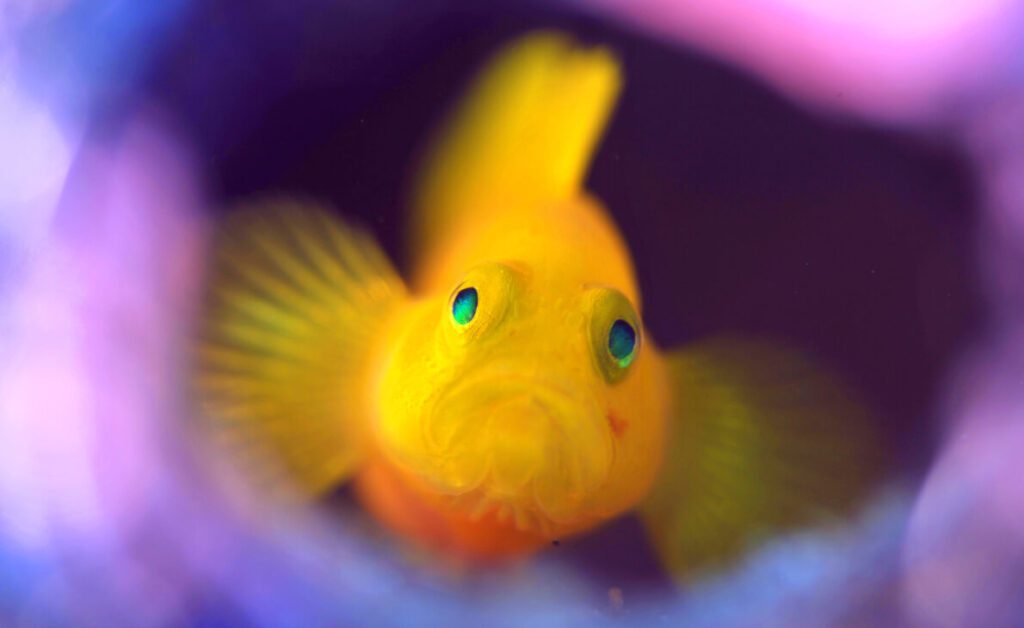
Diseases
Like any other fish, Clown Gobies are susceptible to certain diseases. Awareness of these diseases and taking necessary steps to prevent and treat them is crucial.
- Ick (Ichthyophthirius multifiliis): This parasitic infection manifests as white spots on the fish’s body. It is highly contagious and can be fatal if left untreated. You can use over-the-counter medications designed explicitly for saltwater fish to treat Ick. Maintaining optimal water parameters and ensuring a stress-free environment for your Clown Goby is also essential.
- Fin Rot: This is a bacterial infection that affects the fins of the fish, causing them to become frayed and deteriorate. Poor water quality and stress can contribute to the development of fin rot. To prevent and treat fin rot, it is crucial to maintain clean water conditions and provide a well-balanced diet. Antibacterial medications may also be necessary in severe cases.
- Velvet (Amyloodinium ocellatum): Velvet is a parasitic infection with a golden or rust-coloured coating on the fish’s body. Infected fish may exhibit scratching behaviours. To treat Velvet, it is important to quarantine and treat the affected fish with medications specifically designed to target parasites. Cleaning and disinfecting the main tank can help prevent the spread of the disease.
- Marine Ich (Crytocaryon irritans): Marine Ich, also known as Crypt, is a parasitic infection similar to freshwater Ick. It appears as small white spots on the fish’s body. You can use medications designed explicitly for saltwater fish to treat Marine Ich. Maintaining optimal water parameters and minimising stress in the aquarium is essential.
Regular observation and vigilance are key to identifying and addressing any health issues promptly. It is recommended to consult with a knowledgeable aquarium professional or veterinarian if you notice any unusual behaviour or symptoms in your Clown Goby.
Diet and Feeding
To ensure the health and vitality of your Clown Goby, it is essential to provide them with a balanced and nutritious diet. Understanding their dietary preferences, recommended foods and feeding schedule is critical to their well-being.
Dietary Preferences
The Clown Goby is a carnivorous species, primarily feeding on small crustaceans and zooplankton in the wild. Replicating their natural diet is essential in captivity to meet their nutritional requirements. They have a small mouth, so it is best to provide them with small prey items or appropriately sized frozen foods.
Recommended Foods and Feeding Schedule
When it comes to feeding your Clown Goby, consider offering a variety of foods to ensure a diverse nutrient intake. Recommended foods include live or frozen brine shrimp, mysis shrimp, copepods, and finely chopped seafood. Feeding them small portions twice daily is advised, as they have a fast metabolism and benefit from frequent feeding.
Tips on Ensuring a Balanced and Nutritious Diet
To ensure a balanced and nutritious diet for your Clown Goby, follow these tips:
- Vary their diet: Offer a mix of protein-rich foods to provide a wide range of essential nutrients.
- Supplement with vitamins: Consider adding a quality aquarium-safe multivitamin supplement to their diet to ensure they receive all necessary vitamins and minerals.
- Monitor feeding behaviour: Observe their feeding habits to ensure they actively consume the provided food. If they are not eating, it may indicate a problem.
- Keep the tank clean: Regularly remove any uneaten food to prevent water quality issues and maintain a healthy environment for your Clown Goby.
By understanding the dietary preferences, recommended foods, and feeding schedule of the Clown Goby, you can provide them with a diet that meets their nutritional needs and promotes their overall health. Follow these tips to ensure a balanced and nutritious diet for your Clown Goby and enjoy their vibrant colours and playful nature for years to come.
Breeding and Reproduction
If you’re interested in breeding Clown Gobies, it’s essential to understand their unique breeding behaviour and the necessary conditions for successful reproduction. In this section, we will explore the process of breeding and the care required for the eggs and fry.
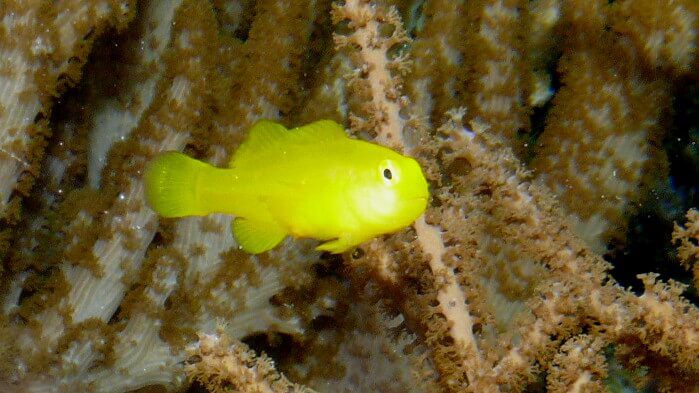
Sexing
Before attempting to breed Clown Gobies, it’s essential to be able to determine the sex of your fish. The sexing process can be challenging, as Clown Gobies do not display apparent external sexual dimorphism. However, experienced aquarists can sometimes differentiate males from females based on subtle differences in body shape and behaviour.
Breeding Behavior and Conditions
Clown Gobies are known for their intriguing breeding behaviour. During courtship, the male performs elaborate displays to attract the female. Once the pair has formed, they will typically find a suitable nesting site where the female deposits eggs while the male diligently guards and cares for them.
Creating the appropriate breeding conditions is crucial for successful reproduction. Provide plenty of hiding places and suitable surfaces for the female to attach her eggs, such as flat rocks or PVC pipes. The water parameters should be closely monitored and maintained, with temperatures around 78-82°F (25-28°C) and salinity between 1.020-1.025 specific gravity.
Care of Eggs and Fry
Once the female has deposited her eggs, it is essential to ensure their safe incubation. The male will diligently guard the nest, fanning the eggs and removing any debris or infertile eggs. Maintaining stable water conditions and providing appropriate nutrition for the developing embryos is crucial. Brine shrimp nauplii or finely crushed flake foods can be used to feed the fry once they have hatched.
Challenges in Breeding in Captivity
Breeding Clown Gobies in captivity can present some challenges. Finding a compatible breeding pair may take time, as not all individuals will form successful partnerships. Additionally, water quality and stability requirements during the breeding process can be demanding. However, with patience, perseverance, and careful attention to the needs of the fish, successful breeding can be achieved.
Summary
In conclusion, the Clown Goby (Gobiodon okinawae) is a captivating species of small saltwater fish that adds vibrance and playfulness to any marine aquarium. We have explored this species’ taxonomy, natural habitat, physical description, and characteristics, highlighting its stunning colours, gender differences, varieties, and grades. Understanding the behaviour and temperament of the Clown Goby is crucial for ensuring compatibility with other tank mates.
Regarding aquarium requirements, providing an ideal tank size and layout, maintaining proper water parameters, and carefully selecting compatible tank mates are key. While the Clown Goby is generally compatible with live plants and invertebrates, attention should be given to their specific needs. Regular care, including monitoring for common diseases and taking preventive measures, will help maintain the health of your Clown Goby.
Feeding the Clown Goby a well-balanced diet is essential. You can ensure their nutritional needs are met by understanding their dietary preferences, recommending suitable foods, and establishing a feeding schedule. Finally, for those interested in breeding the Clown Goby, learning to sex the fish and providing suitable breeding conditions are essential for successful reproduction.
Following the care requirements outlined in this guide can create a thriving environment for your Clown Goby. Remember to tailor their care to their unique needs, and seek guidance from reputable sources if you have any concerns or questions. We hope this care guide has provided valuable insights and inspires you to enjoy the beauty and companionship of the Clown Goby in your marine aquarium.

